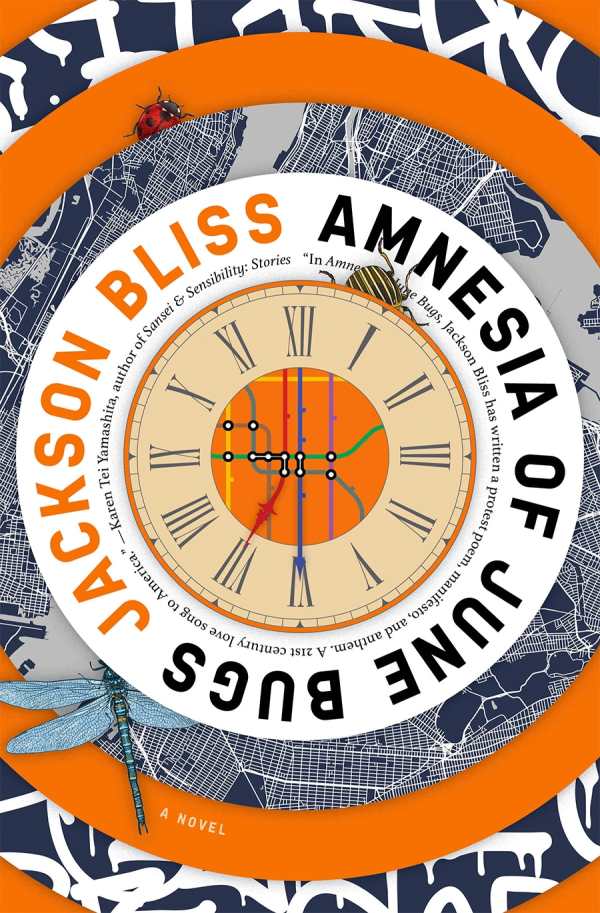Amnesia of June Bugs
In Jackson Bliss’s vibrant and intense novel Amnesia of June Bugs, four people cross paths on a stalled New York subway train during 2012’s Hurricane Sandy.
With a cyclical, reverse-time structure, the novel follows Aziz, a Moroccan French literary translator; Suzanne, an Indian American tourist; Ginger, a multiracial graphic designer; and Winnie, a Chinese American graffiti artist. Winnie and Ginger live in New York and have a longstanding romantic involvement, while Suzanne and Aziz meet as distressed visitors. After boarding the same train line, they become trapped within an underground purgatory, like a “steel sarcophagus” in the middle of a “storm cloud.”
Though the harrowing subway ride is pivotal, the heft of the novel involves the characters’ intriguing backstories. Streetwise Winnie is a “cement poet” and “student of the artistic revolution.” Millions of Instagram followers adore the mystical, random appearances of his political graffiti creation, the Buddha Mao, throughout the city. Ginger loves children and wants her condominium “jam-packed with precocious bambini,” but her pregnancy tests are always negative.
Suzanne sometimes misses her family life in Chicago, but she’s also reluctant to accept her parents’ cultural expectations. She is generous in tipping taxi drivers and food service workers, and sports a ladybug backpack and “Bleeding Commie” red lipstick. Aziz affects intellectual cynicism to hide his romantic vulnerability and feelings of emotional and racial displacement.
Lovely moments, as with Winnie and Ginger’s rooftop picnic amid “gold candlelight,” contrast with the harsher aspects of urban life, such as violent crime and economic disparity. The flow of observations, from Williamsburg hipsters to Bronx classrooms and Chinatown domino games, is both agitated and poetic, resulting in a multicultural, shifting perspective.
Beyond its four “prisoners of darkness and coincidence,” Amnesia of June Bugs recalls the boundless, ruthless, and exhilarating energy of a pre-pandemic New York.
Reviewed by
Meg Nola
Disclosure: This article is not an endorsement, but a review. The publisher of this book provided free copies of the book to have their book reviewed by a professional reviewer. No fee was paid by the publisher for this review. Foreword Reviews only recommends books that we love. Foreword Magazine, Inc. is disclosing this in accordance with the Federal Trade Commission’s 16 CFR, Part 255.

